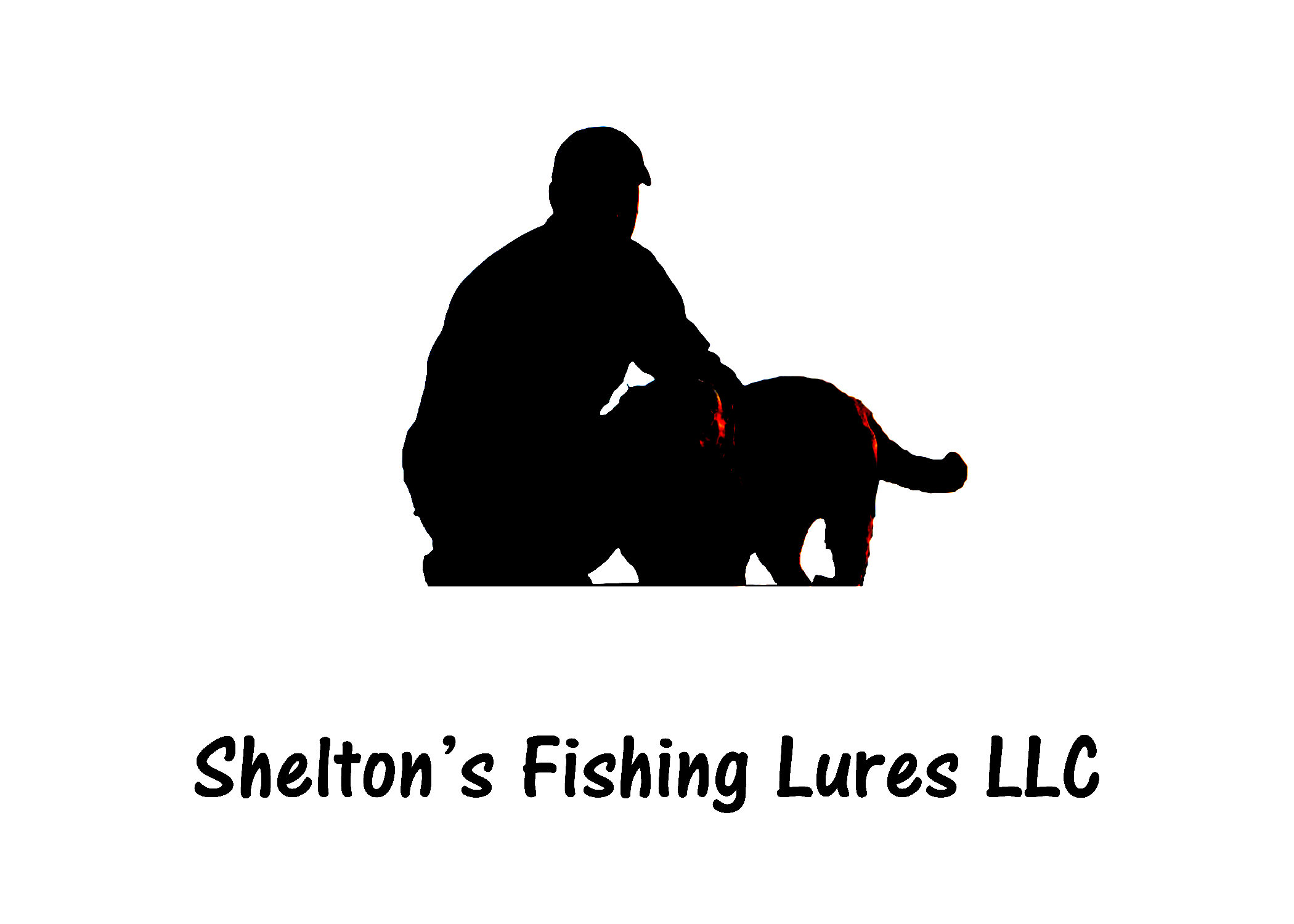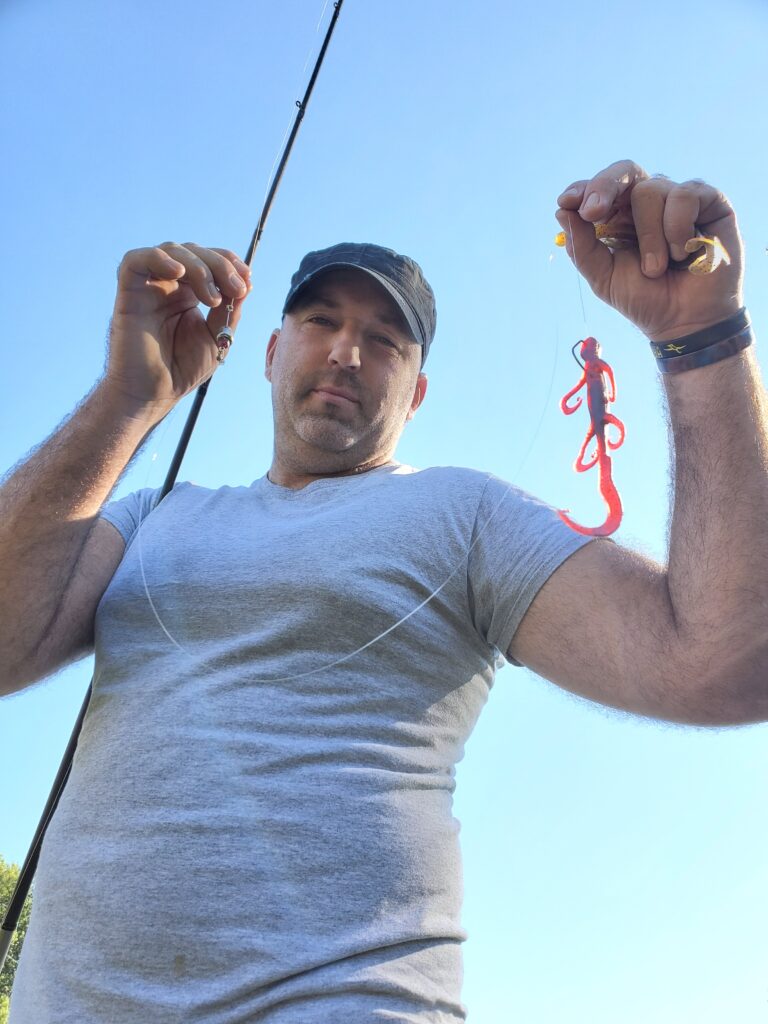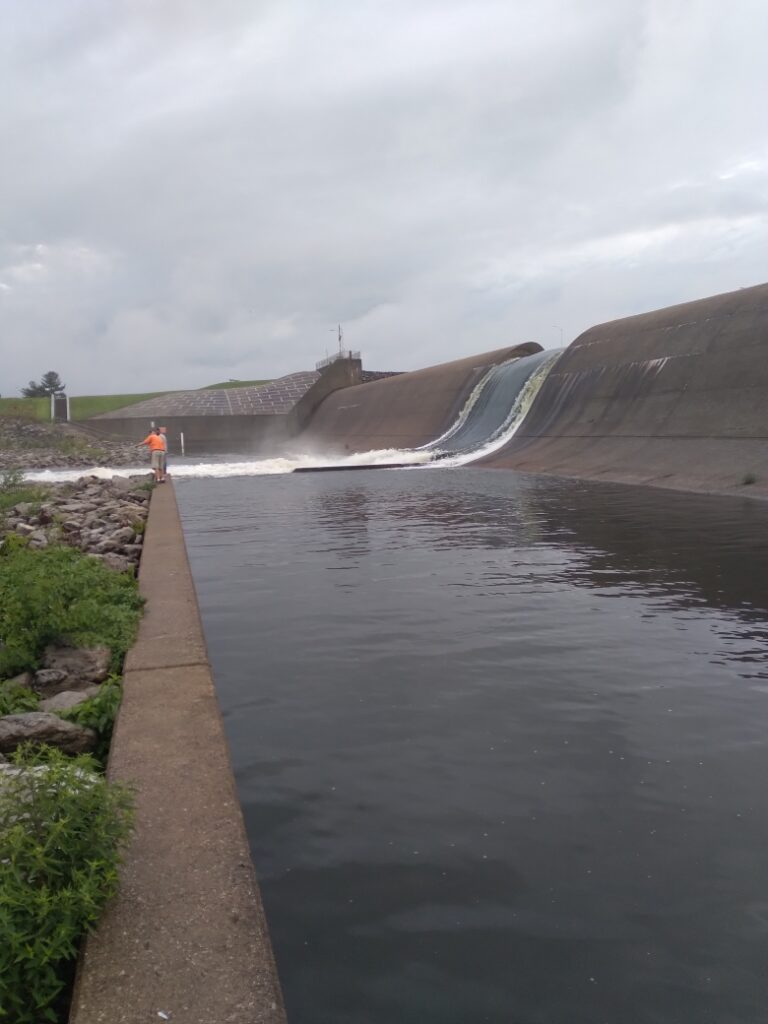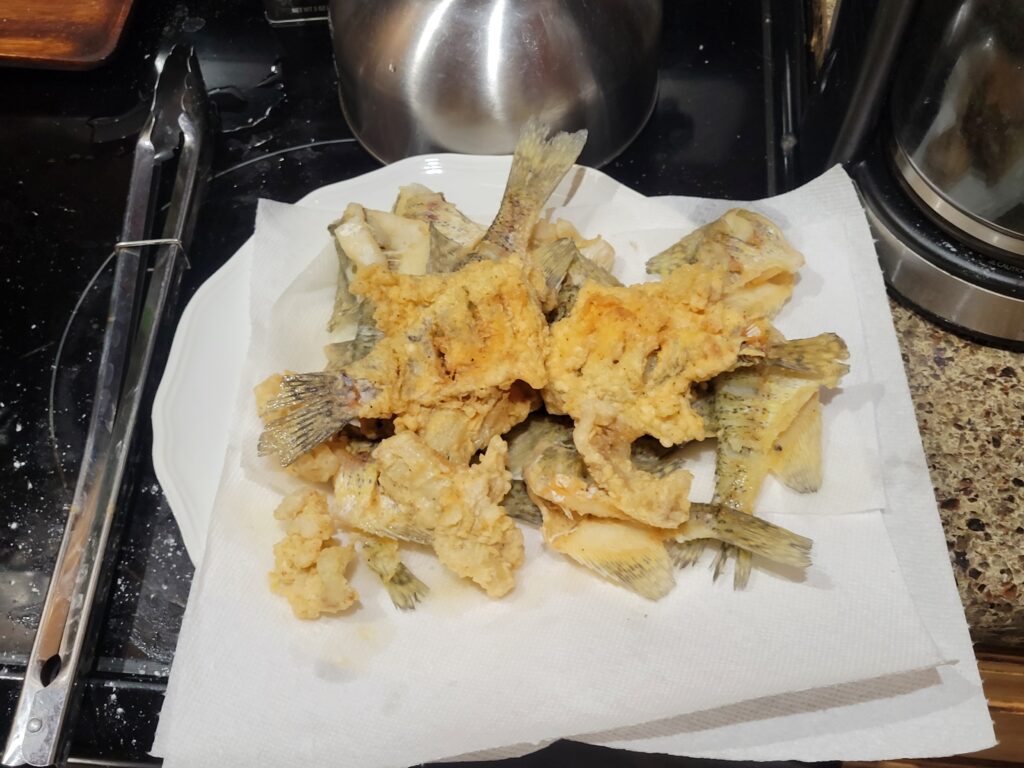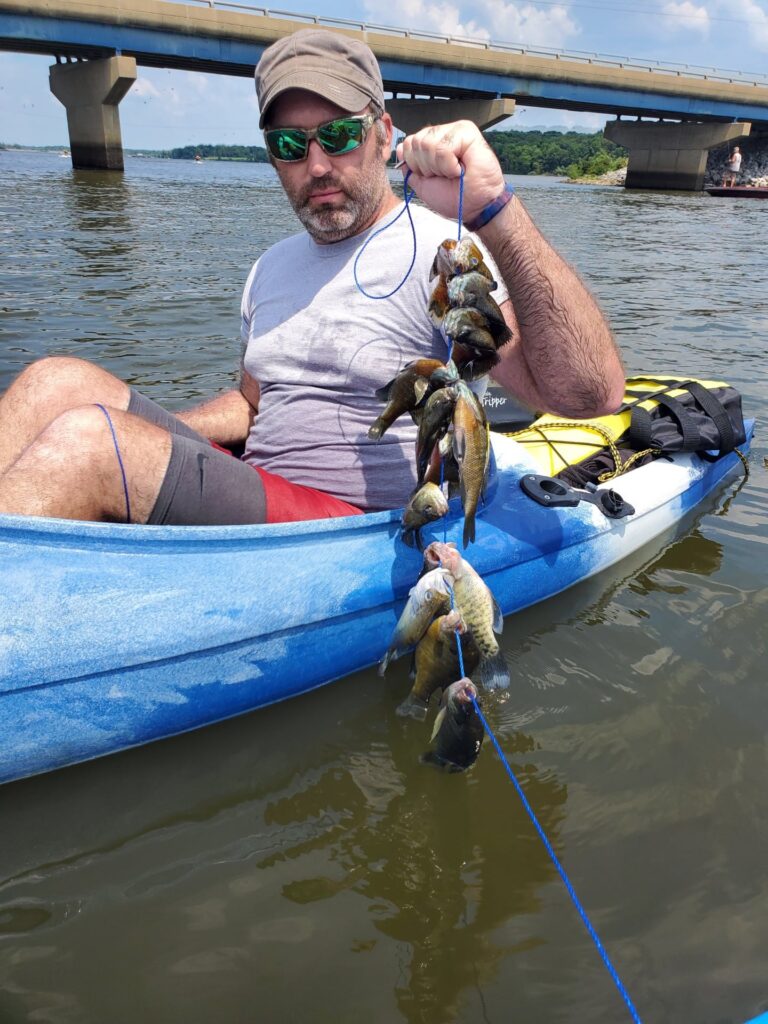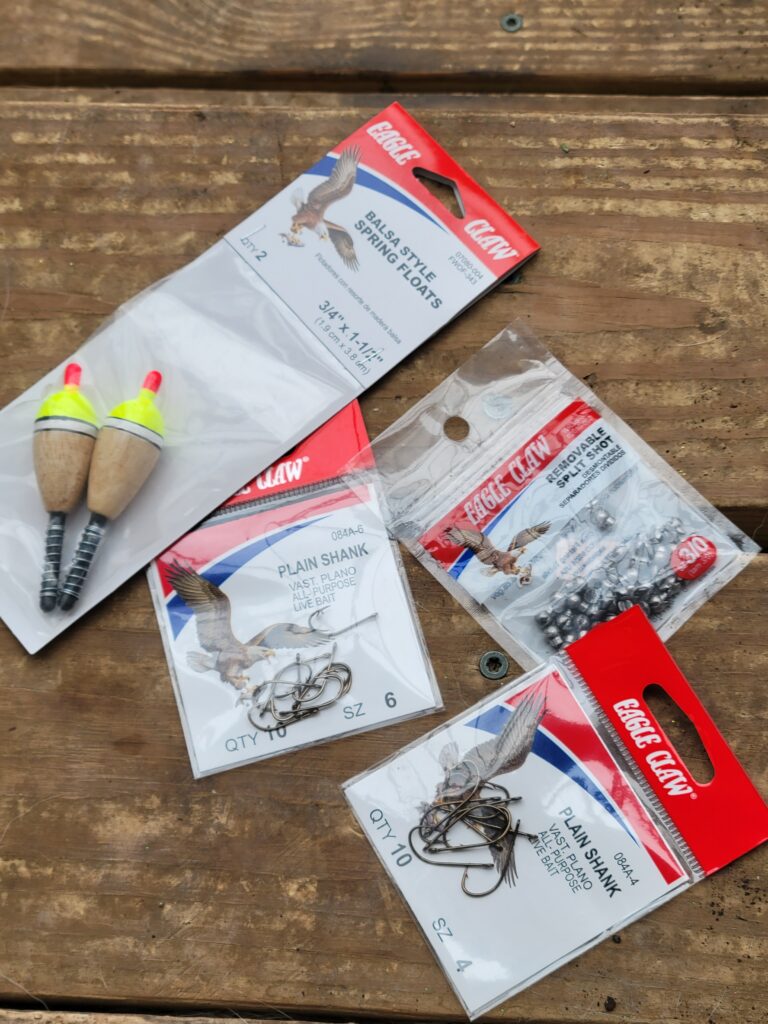Tips and Tricks
Why The Carolina Rig Is The Best Search Bait For Bass (And How To Use It)
The pole that sits toward the bottom of most angler’s rod locker is the Carolina Rig which is unjust in my opinion.
Why Is It That Most Angler’s Only Pull Out The Carolina Rig When All Else Has Failed?
To this day one of my absolute favorite ways to fish is one of the oldest most reliable techniques that work under any condition any time of the year with little more than a bait modification. I’m not talking about a football jig in summer, nor a jerkbait in winter, but a small tungsten weight with a leader and bait hovering up above. I’m talking the Carolina Rig!
To me it is the most versatile search rig we have at our disposal. Fish it deep, fish it across flats…What about grass you ask? It outshines most other baits! If you’re looking for one stump in the middle of a pocket, it should only take a couple of quick casts to locate it. I cannot stress enough how important it is to learn how to master the Carolina Rig. I plan to go into deep detail in the article ahead so that whether you’re new to the presentation or have just forgotten about it, you can experience a renaissance.
What Is The Carolina Rig?
To someone new to the sport of bass fishing, the Carolina rig really started picking up steam in the 80’s and early 90’s. Anglers were looking for ways to present soft plastics to deeper bass quicker than the traditional Texas Rig. Out east it was winning tournaments all the time until word got out.
3 main components make up a Carolina Rig which I will focus on though it can be modified with other bells and whistles
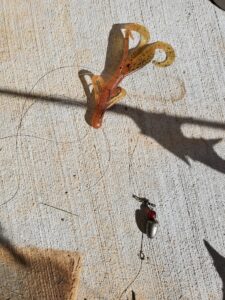
- Weight usually in the 1/2-ounce range depending on depth and wind
- Swivel with leader tied at a pre-determined length based on the time of year and current conditions
- Lure Any soft plastic used on a Texas rig and even some hard baits work!
Let’s Start With The Weight
I use tungsten weights when premade brass rigs aren’t available as opposed to traditional lead. Lead has many properties that have made it obsolete. First lead is a soft metal, when you drag it across the bottom of a lake it absorbs the shock of the bottom which dissipates before it leads to the rod tip but not with tungsten or brass.
With Tungsten you feel every pebble. Also, Tungsten is a denser metal and lowers the presentations profile putting a few extra fish in the boat under most circumstances.
Swivel and Leader Are There To Be Adjustable
One of the main staples of the Carolina Rig is the fact that you can cover anywhere from the bottom to up to six feet off the bottom to catch suspended bass. A Swivel Joins the two lines and depending on where you’re catching your fish, you’ll adjust the leader length.
What Lure Works Best?
I can’t answer that because every soft plastic lure works. I can tell you the two most popular lures are lizards and Brush Hogs. Why? When these particular baits are weightless in the water column it brings out their best action.
Choosing The Correct Fishing Line
By now you should realize that the line size variable is just as wide open as all the other options but there are still favorites amongst anglers. If I’m power fishing I will go with a 15lbs braid main line and then go down to a 10lbs test monofilament as my leader. Braid helps cast farther and Mono is more buoyant keeping your bait off of the bottom.
How To Retrieve The Carolina Rig?
Fortunately, this is the best part of the Carolina Rig. It is truly the easiest presentation! Just throw it out, let it hit the bottom, and then slowly drag it back to the boat pausing for a few seconds. Four out of five times when a fish bites I don’t feel it. It’s only after I’ve paused it do I feel a heavy sensation and look up to see my line running. You don’t have to set the hook hard but instead use a side sweeping action. Once in a while you will actually feel the fish hit it, same hookset should be applied.
Now That We Have A Better Understanding Let’s Dive In Farther.
I said at the beginning of this article that it can be used anytime of the year. I don’t care what the conditions are, if the fish will bite, I can make them eat a Carolina Rig. This is what makes it so special. If I’m going to a lake I’ve never been to before and I can’t catch them on any of my strengths, then I have no problem whizzing the ball and chain around. I know I won’t get tired and that I’ll be able to hone in on what the fish are feeding on.
Spring Fishing For Bass With A Carolina Rig
This is the prime time for fishing a Carolina Rig. Fish are either located inside of spawning pockets or just off of on the nearest drop. Bass go in to set up an area to rear their young and will eat anything that could pose a threat. Lizards are at the top of that list and that’s why they work so well. I start at the back of pockets and work my way out to drop offs. I keep my leader length at about two feet unless the fish tell me otherwise.
Summer Fishing For Bass With A Carolina Rig
After the spawn the majority of large bass move away from the pockets and head out to deeper water to feed on large shad and recover. The Carolina Rig is now set up perfectly for your main lake points. Park your boat about thirty feet off of the creek channel drop. Cast up onto the flat and then drag your bait back. Continue until you reach the other end of the point then or until you locate where those fish are staging. Sometimes you have to fish several points but when you find them it’s possible to hit the motherload! A Zoom Fluke works extremely well at this time fished on a four foot leader.
Fall Fishing Can Be A Little Tough
Fall is never an easy time to locate fish. Bass are on the move with shad trying to feed up before their metabolism slows down to get them through winter. While the Carolina Rig is not my first choice here I won’t retire it just yet. If you’re able to locate bass but not make them hit it’s time to rig up a larger leader (up to six feet) and cast a small Fluke or Paddle Tail. Fish as fast as you can with only a one or two second pause so that you can cover water.
Winter Is A Strong Bounce Back Season For The Carolina Rig
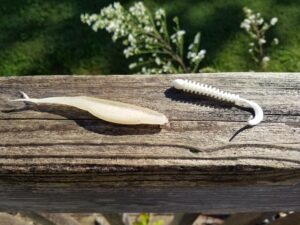
Bass feed in the winter. They just don’t feed as aggressively but will rarely pass up an easy meal. Since you find your largest schools this time of year the Carolina Rig is one of my top three presentations. If the fish are pushed down to the bottom, I will modify my presentation. I switch to what is now referred to as a finesse Carolina Rig. I will trade in a bait cast combo in for a spin cast. Next Drop your main line down to 10 pound fluorocarbon with your leader going to 8 pound monofilament. Bait selection is easy. The classic Curly tail grub or any kind of curly tail 4″ or less in white will load the boat.
Inconclusion On Why I Believe The Carolina Rig Is The Best Option When Searching For Bass.
Throughout my article I hope I’ve at least convinced you to revisit the old Carolina Rig. You can spend an entire day making adjustments honing in on the perfect bait, leader length, and area to fish. It won’t tax your arm like a heavy spinnerbait and your hook up ratio’s are much higher than your average bait. When it comes to rod and reel combo you can actually go a little cheap on each. If you’d like to see what combo I prefer feel free to read my article on Top 5 Reels.
